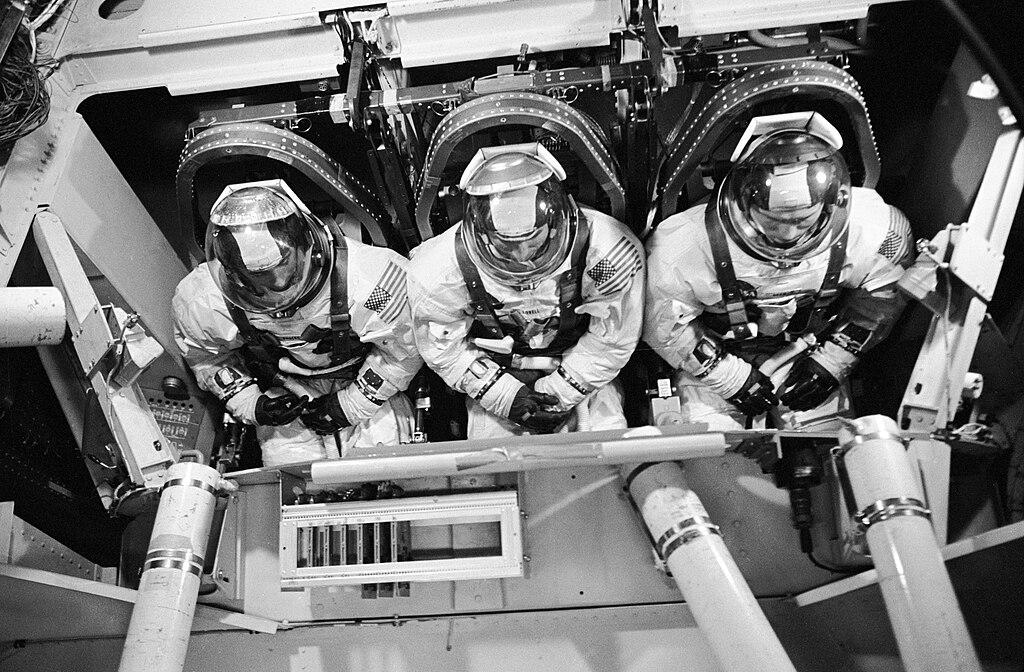How the Moon Landing Still Teaches Us to Trust Truth in a World Full of Doubt

The first time humanity looked up and saw a footprint on the Moon, we did not just witness history; we witnessed ourselves. That small step was not about rockets or machines. It was about human imagination, the part of us that refuses to stay still when there is mystery waiting beyond the horizon. But today, the same moment that once united us has become something many now question. Online, a single doubt can echo louder than all the evidence in the world.

Maybe this is not a story about the Moon at all. Maybe it is about trust, about how easily it slips away when information feels endless and truth feels uncertain. As Dr. Alfredo Carpineti reminds us, “skepticism is healthy when applied thoughtfully.” Yet somewhere along the way, our skepticism began to close our eyes instead of open them. The Moon is still there, but perhaps our real mission now is not to return to it, but to find our way back to believing in each other.
The Seed of Doubt
Every great story has a moment when belief is tested. For humanity, one of those moments began not on the Moon, but here on Earth, during a time when trust was already breaking. The 1960s were a storm of contradictions. While the world watched rockets rise into the sky, faith in institutions was falling back to the ground. The Vietnam War filled screens with loss, leaders were taken by violence, and secret intelligence programs came to light. When the United States finally reached the Moon, some saw a triumph of human spirit, but others, worn by years of deception, wondered if it was all a performance.
That question found its first loud voice in 1974, when writer Bill Kaysing released We Never Went to the Moon. His words planted the idea that NASA had faked the landings to outshine the Soviet Union. There was no solid proof, yet his claim resonated with a generation who had grown weary of broken promises. Television programs soon echoed his story, giving it airtime and shaping it into something that looked almost credible. In living rooms across America, disbelief began to feel like courage, and doubt became entertainment.

Decades later, the rise of the internet turned those whispers into a chorus. Online forums, blogs, and social networks created a new kind of gravity, pulling misinformation toward anyone seeking answers. On platforms like YouTube and Facebook, edited videos and misread images spread faster than any scientific correction. In that digital swirl, repetition became its own evidence. People mistook volume for truth, and communities built around disbelief began to form, convinced that skepticism itself was enlightenment.
As Dr. Alfredo Carpineti observed, this is no longer about the Moon alone. It is about how we choose to see the world. When mistrust takes root, facts become negotiable and myths begin to feel like home. The Moon conspiracy endures not because evidence is lacking, but because the human heart still wrestles with who, and what, it is willing to believe.
The Hands That Reached the Moon
It is easy to look at a rocket and see only metal and fire. What most people forget is that behind every launch was a heartbeat. The Apollo program was not the work of a few men in white suits but of an entire generation that dared to build something bigger than themselves. More than four hundred thousand people gave their hands and minds to the mission. Engineers shaped engines that would lift humanity beyond Earth. Scientists designed instruments that could survive the unknown. Seamstresses, with needles and steady patience, sewed the suits that would carry the first footsteps into the silence of space. Every contribution, from the smallest bolt to the largest blueprint, was a promise to the idea that truth could exist beyond our atmosphere.
When people claim it was all an illusion, they overlook the scale of what it would take to hide such a thing. As Dr. Alfredo Carpineti explained, keeping a secret between two people is difficult enough. To imagine hundreds of thousands doing so across different countries and disciplines without a single credible leak is to ignore how human beings actually are. There is no record of whispers, no hidden confession that ever surfaced. What remains instead is a trail of work, effort, and pride too vast to be erased by disbelief.

And the world was watching. The Parkes Observatory in Australia, portrayed in the film The Dish, was one of several facilities that received the signals as they came from the Moon in real time. Teams across continents verified the transmissions, tracking the astronauts’ every move. Even the Soviet Union, locked in a rivalry with the United States, followed the missions with its own radio telescopes. If the landings had been false, it would have been their greatest weapon to expose it. Yet no accusation ever came, because what they heard through the static was the truth.
What this tells us is simple. The Moon landing was not a story crafted in secrecy. It was a story built in collaboration, broadcast to the world, and verified by those who had the most to gain by denying it. The more we understand the human effort behind it, the harder it becomes to see the event as fiction. The journey to the Moon was not just NASA’s achievement. It was humanity, working together, proving that belief grounded in evidence can still lift us beyond doubt.
The Hunger for Wonder
Beneath every conspiracy theory lies a quiet desire. It is the desire to believe that there is something more than what we see, that the world still holds mysteries large enough to make us feel small again. The Moon landing, for all its proof and precision, stripped some of that mystery away. When we first set foot on the lunar surface, we replaced imagination with evidence, and for some, that exchange felt like a loss.
In a time when information is instant and certainty is rare, disbelief can feel thrilling. It gives people a sense of discovery, as if they have found a hidden truth that others have missed. Psychologists call this a form of epistemic hunger or the need to fill the void left by uncertainty with something that feels meaningful. For a few, the idea of a grand deception is easier to accept than the messy, complex, collaborative reality of human progress.

Yet the wonder we seek has never left us. The true mystery is not whether we went to the Moon, but how ordinary people found the courage and intellect to make it possible. Every equation, every weld, every sleepless night was part of that story. It was not a show staged for cameras but a symphony of persistence and imagination. If we must search for magic, perhaps it is not hidden in a cover-up, but in the ability of human beings to turn what once was fantasy into fact.
Wonder should not lead us to doubt truth. It should lead us to expand it. The real beauty of the Moon landing is not that it answered every question, but that it gave us permission to keep asking new ones.
The Storytellers of Truth
The Moon landing was not only a scientific breakthrough; it was also one of the most powerful stories ever told. Millions of people watched as the black and white images flickered across their television screens, and for one extraordinary moment, the entire planet shared a single heartbeat. Yet stories, no matter how true, are fragile. They depend on how they are told and on whether we choose to keep listening.
When the cameras stopped recording and the headlines faded, new storytellers emerged. Years later, writers, filmmakers, and online creators began retelling the event in their own ways. Some wanted to inspire a new generation, while others discovered that doubt and controversy drew more attention than truth. Photographs were taken out of context, shadows were misread, and half-truths were presented as revelations. What began as a moment of unity slowly transformed, in certain corners of culture, into a spectacle of disbelief.
Researchers in psychology and communication have long observed that people are moved more by emotion than by evidence. Stories have a way of shaping our beliefs faster than facts can. The way the Moon landing has been portrayed through time shows how easily meaning can drift when the spotlight shifts from understanding to entertainment. The event that once connected the world became a mirror reflecting our growing struggle to separate fact from fiction.

Yet truth is patient. It does not disappear when ignored, and it does not bend to opinion. The records, the samples, and the data remain exactly as they were. What changes is how we engage with them. The responsibility of every storyteller, whether a journalist, educator, or ordinary citizen sharing information, is to protect the integrity of what is real. The Moon landing reminds us that truth is not only something to be proven; it is something to be cared for.
Beyond the Moon, Back to Ourselves
The first footprint on the Moon was more than a scientific milestone. It was a moment that proved the power of human imagination when guided by unity and courage. The mission was born from an age of conflict but ended as a testament to collaboration. It showed that when people trust knowledge and work together with purpose, even the impossible can become real.

Half a century later, we face a different kind of frontier. The challenge is no longer how far we can travel, but how deeply we can reconnect with truth in a world where misinformation spreads faster than light. The lesson of the Moon landing is not only about rockets or technology. It is about belief, about remembering that progress depends on our ability to trust what is real and to protect it with integrity.
The Moon does not speak, yet it still teaches. It reminds us that truth, like its light, remains constant even when clouds of doubt pass in front of it. We do not need to go back to the Moon to rediscover wonder. We only need to look inward, to remember that the same human spirit that reached the stars still lives within each of us, waiting to rise again.
Featured Image from NASA Johnson Space Center, Public domain, via Wikimedia Commons
Loading...

